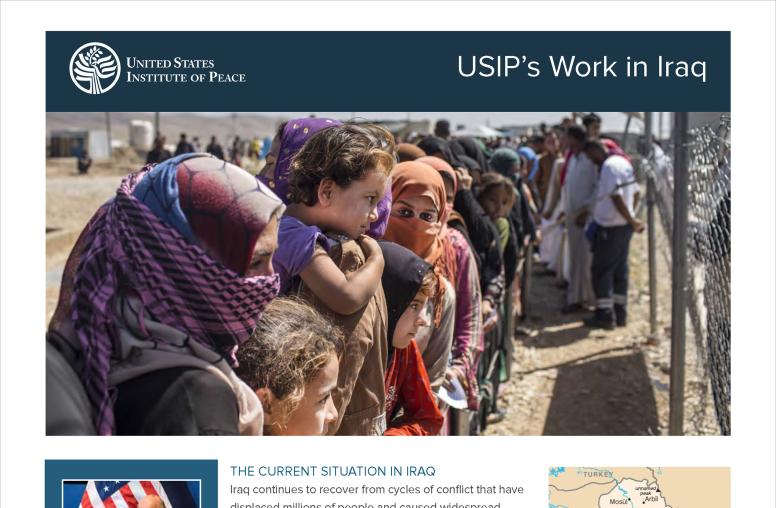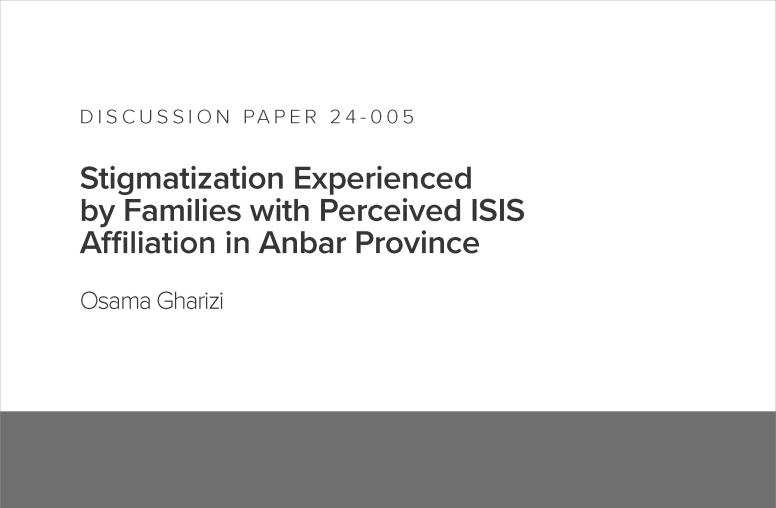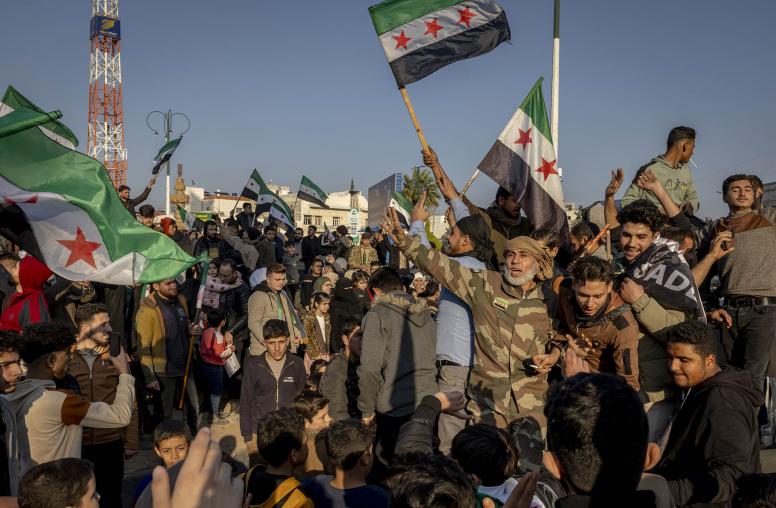Bringing Peace to a War
Colonel Paul Hughes reflects on USIP's presence in Baghdad facilitating inter-ethnic and inter-religious dialogue, conducting conflict resolution activities, supporting rule of law programs, and training Iraqi leaders in democratic principles.

Once the decision was made to remove Saddam Hussein from power through the use of military force, Congress began considering how the reestablishment of peace would occur. The U.S. Institute of Peace (USIP) was directed by Congress in 2004 to establish itself in Iraq for the purpose of building the peace.
Specifically, USIP was asked to facilitate inter-ethnic and inter-religious dialogue, conflict resolution activities, support rule of law programs, and train Iraqi leaders in democratic principles. The Institute had the capabilities needed to perform this work but having the capacity to operate on the ground in a non-permissive environment was another thing. Suitable facilities had to be found, staff hired, logistical problems solved, cooperative frameworks built, and a new institutional paradigm developed.
Its analysis of the situation revealed many tensions and obstacles existed not only between various Iraqi factions but also with the U.S. organizations in Iraq as well. As the USIP team began the process of building its office staff (mostly Iraqi), it also began the work to establish and build ties with the U.S. embassy, USAID, and the U.S. military, ties that enable all concerned to be more aware of the challenges and nuances of peacebuilding in an active combat zone.
One of the innovations used by USIP was to craft a conflict reconciliation program that married conflict analysis, negotiation skills, and modern simulation technology together to help Iraqis learn how to better understand their differences and priorities, apply newly honed negotiation skills, and work together in a virtual environment.
In March 2007, the Baghdad Office of USIP conducted one of these reconciliation programs with the Baghdad Provincial Council, a group of 34 leaders from the province’s 16 districts. Conducted during the early days of “The Surge,” when violence in Baghdad was at an all-time high, these leaders braved the risks of Baghdad violence to attend all five days of training held inside the Green Zone. Their training included two days of training in conflict reconciliation and negotiations skills taught by two of the USIP-trained Iraqi facilitators. A three day simulation was also included based on the Strategic Economic and National Security Exercise (SENSE) model.
Upon the completion of the week-long training, a small “graduation” ceremony was held at which a representative from the U.S. embassy congratulated the council members and I presented certificates to each of them. But the real pay-off for USIP was just about to begin. As the provincial council members congratulated each other following the ceremony, two of them approached me. One was represented a Shiite-dominated district of Baghdad while the other represented a neighboring Sunni-dominated district. Fighters from each district fought each other on a daily basis.
Both representatives approached me with smiles and expressed how valuable they found this training. They then asked if I could arrange a similar training event for their respective district councils. I replied that I could but it would require two separate sessions since I never thought these two would really work together given the harsh realities of Iraq’s war.
To my surprise, they both said, “But we want to do this training together with both councils!” Here were two men who represented two communities with such differences between them that for the last three years their citizens only saw the power of the gun as the way to solve their issues. And now they were joining arms asking for USIP to help them create a basis for dialogue between their councils in an effort to stop the violence.
During this time, Baghdad was becoming a ghost-town of sorts as international groups fled to the Kurdish north or to Jordan to escape the violence. The Institute held firm in its belief that if we wanted to help break the cycle of violence, we had to remain in Baghdad to show the Iraqis we were committed to them and their future.
The Baghdad Office stayed and it honored the request of these two district leaders. The result was the start of a long process of reconciliation between these two communities. We didn’t provide the “silver bullet” for their issues but we did crack the door open for them to sit down and begin discussions about their issues.



